
views
Linking Two Sentences

Write one complete sentence. A complete sentence must contain a subject and a verb and be a complete thought. The subject is the person, place, or thing that the sentence is about, and the verb is the action that is being performed in the sentence. Ex: "Wanda couldn't fall asleep last night."
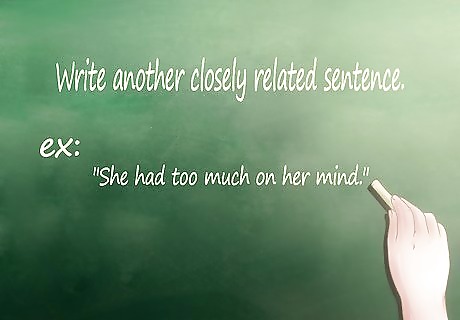
Write another closely related sentence. This sentence must be strongly related to the first sentence for the semicolon to work. Ex: "She had too much on her mind."
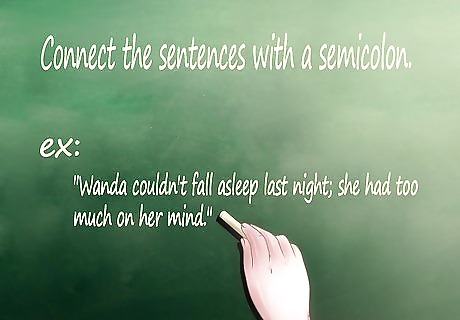
Connect the sentences with a semicolon. Remember to make the first letter of the second sentence lowercase. Ex: "Wanda couldn't fall asleep last night; she had too much on her mind." A semicolon is used in parallel construction. Tip: You can treat a semicolon as a period to connect two closely related sentences. This means that you can replace any semicolon with a period.
Linking Items in a List

Write a sentence that contains a complicated list. Each item in the sentence should contain commas, and each item should also be separated by commas. Ex: "I have a sister in Columbus, Ohio, another sister in Palm Springs, Florida, and a third sister in Oakland, California."
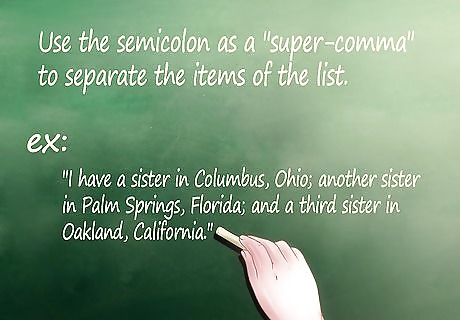
Use the semicolon as a "super-comma" to separate the items of the list. This will make it easier to distinguish between the items in the list. Ex: "I have a sister in Columbus, Ohio; another sister in Palm Springs, Florida; and a third sister in Oakland, California."
Linking Sentences with Internal Punctuation
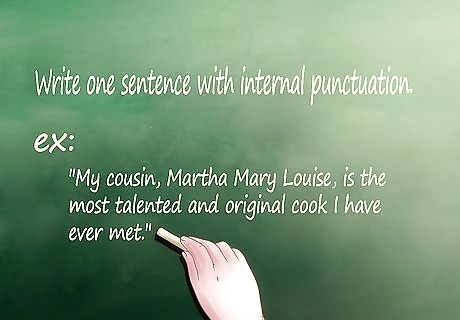
Write one sentence with internal punctuation. This sentence can use a colon, dash, or comma. Sentences with internal punctuation tend to be longer. Using semicolons to separate sentences with internal commas is the most common method. Ex: "My cousin, Martha Mary Louise, is the most talented and original cook I have ever met."

Write another closely related sentence with internal punctuation. Ex: "She is very resourceful and can make almost any old food taste delicious, but she does specialize in the following items: cod, fruitcake, and squash."
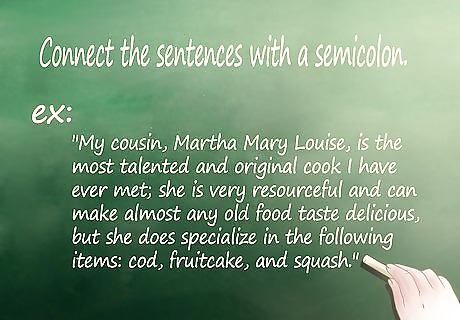
Connect the sentences with a semicolon. Ex: "My cousin, Martha Mary Louise, is the most talented and original cook I have ever met; she is very resourceful and can make almost any old food taste delicious, but she does specialize in the following items: cod, fruitcake, and squash."
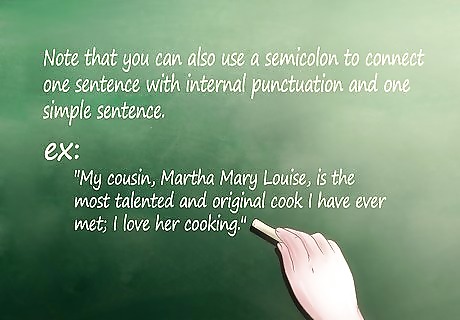
Note that you can also use a semicolon to connect one sentence with internal punctuation and one simple sentence. Ex: "My cousin, Martha Mary Louise, is the most talented and original cook I have ever met; I love her cooking."
Linking Sentences with a Transitional Phrase or Conjunctive Adverb
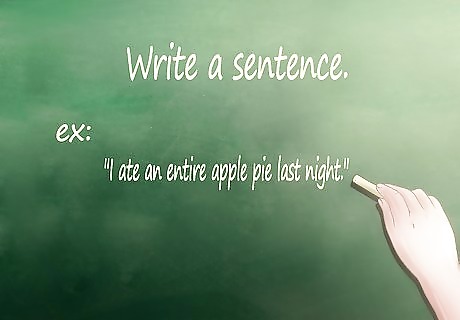
Write a sentence. You can keep it simple. Ex: "I ate an entire apple pie last night."
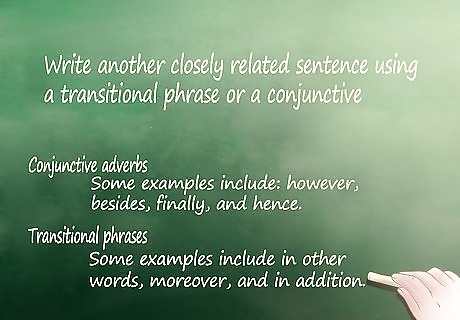
Write another closely related sentence using a transitional phrase or a conjunctive adverb. Conjunctive adverbs are words that show a relationship between the two sentences, such as cause and effect, contrast, or comparison. Some examples include: however, besides, finally, and hence. Transitional phrases are used to move from one sentence to the next in a logical and smooth way. Some examples include in other words, moreover, and in addition. Ex: "As a result,' I felt sick when I woke up."
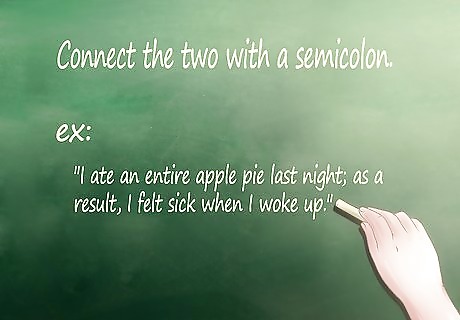
Connect the two with a semicolon. Ex: "I ate an entire apple pie last night; as a result, I felt sick when I woke up."
Avoid Confusing the Semicolon with the Comma
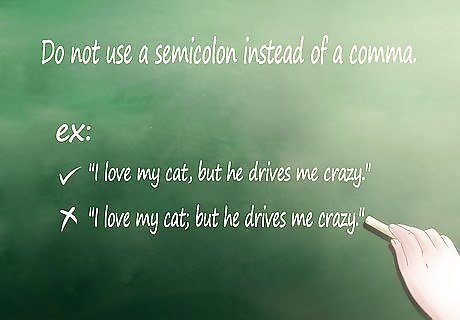
Do not use a semicolon instead of a comma. Commas can be used to connect two simple sentences and a coordinating conjunction (but, and, nor, or so, for example), while a semicolon cannot. Example of correct usage: "I love my cat, but he drives me crazy." Example of incorrect usage: "I love my cat; but he drives me crazy."

Do not use a comma instead of a semi-colon. A comma can never be used to separate two independent clauses (complete sentences). This is called a comma splice and should be avoided at all times. Example of correct usage: "My kitty is cute; he loves to cuddle." Example of incorrect usage: "My kitty is cute, he loves to cuddle."

















Comments
0 comment